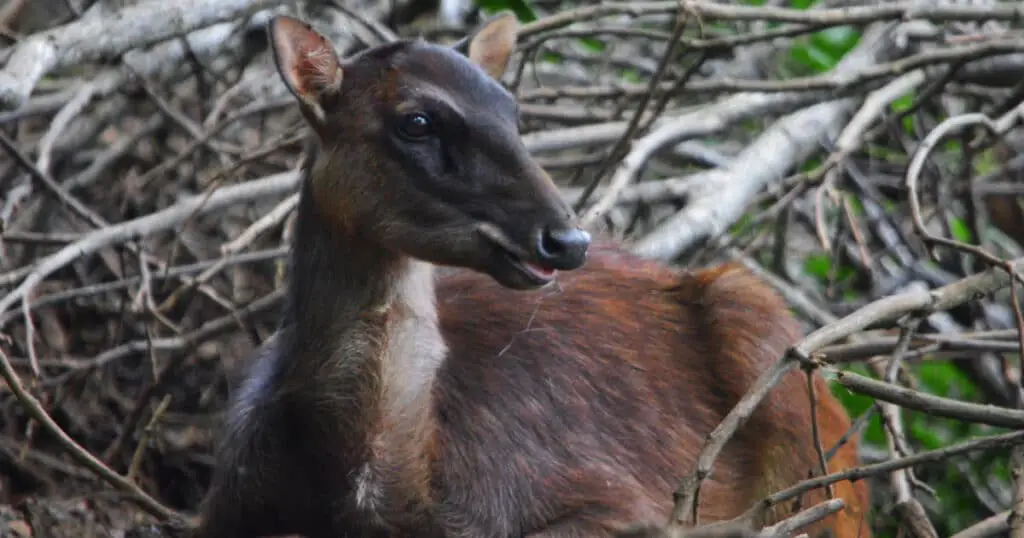The Philippine Deer (Rusa marianna) goes by several different names. You may have heard it referred to as the Philippine Sambar or the Philippine Brown Deer.
This species is considered vulnerable. It is endemic to the Philippine Islands. Philippine Brown Deer prefer the low grasslands that border the perimeter of the islands they inhabit. But this species is often driven higher into the mountains to seek cover and evade hunting.
What Size is the Philippine Deer?
- Head & Body Length – 100 to 150 cm
- Shoulder height – 55 to 70 cm
- Tail length – 8 to 12 cm
- Weight – 40 to 60 kg
What Does the Philippine Sambar Deer Look Like?
The Philippine Sambar is similar in appearance and habits to the other species of Sambar, and is obviously closely related to them.
Some have questioned whether the Philippine Deer should be considered as a separate species or as a subspecies of one of the other Sambar species. It has the typical Sambar appearance, having a thin slender body, long legs and a short head.
However, it is smaller in size than the other Sambar species and the antlers are much shorter.
The coat is a dark brown color, the under parts paler.
The antlers of the males have 2 to 3 tines, and grow on average to between 30 and 40 cm in length.
Where do Philippine Brown Deer Live?
Now let’s take a look at where you can find this deer species in the world, and what type of habitat they prefer to live in.
Distribution
As its name would suggest, you’ll find this species in the Philippines. Hhere it lives on a number of islands. Primarily, you’ll find the Philippine Deer on the islands of:
- Luzon,
- Mindoro, and
- Mindanao.
Humans probably introduced the Philippine Deer to some islands to provide a source of food. This deer species is considered to be at risk due to a low total population. With that said, most local populations are fairly stable.
Like many deer in this part of the world, this species may be under threat from over hunting and from habitat loss. The growing human population of the Philippines will undoubtedly need more agricultural land in the future, and this could provide a threat to the survival of this type of deer.
Preferred Habitat
The Philippine Sambar lives on steep mountain slopes that are covered by forest and woodland. They live in clearings within the forest. They occur at altitudes up to 3000 metres.
Mating Habits & Reproduction in Philippine Deer
The reproductive life of this animal is thought to be similar to that of other Sambar deer. That said, little is actually known about it due to a lack of research.
The rut takes place in the autumn. Females give birth to a single fawn after a 245 to 285 day long gestation period in the spring of the following year, normally in May or June.
The fawns nurse for about 6 months before their mothers wean them. They reach sexual maturity from 18 months of age.
Unique Behavior of Note
Philippine Sambar Deer feed mostly on mountain species of grasses and herbaceous plants. They have a maximum lifespan of about 15 years and like most species, wild deer don’t live as long.
Humans rarely see Philippine Brown Deer because they are mostly nocturnal.
They lead mostly solitary lives, although they may be seen in small groups occasionally. Their main predator is man.
Photo courtesy Shukran888, CC BY-SA 4.0, via Wikimedia Commons

